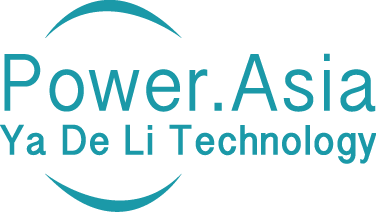|
Misconceptions surrounding energy efficiency of inverters available in the market.
|
(1)
|
VC series equipment:
| (a) |
Working characteristics are constant frequency, variable voltage and variable current. |
| (b) |
Working principle consists in use of a detection loop, a power switch device (SCR, thyristor). |
| (c) |
Simple structure, lower price |
| (d) |
Applicable in cases where changes in RPM are not desired, but there is evident change in load. |
| (e) |
Examples: escalator, conveyor belts, stone cutting machines, plastic injection molding equipment, etc. |
|
|
(2)
|
Inverter:
| (a) |
Working characteristic is to change frequencies (adjust speed). |
| (b) |
Has distinctions between fixed voltage, variable current, adjustable frequency; variable voltage, variable current, variable frequency (VVVF). |
| (c) |
Working principle consists in the use of rectifier, DC storage device, inverter, control loop. |
| (d) |
There are AC, DC inverters available. |
| (e) |
Structure is more complex, higher price. |
| (f) |
Main applications are cases where frequency and velocity need adjustments. |
| (g) |
Examples: aerial work platforms, precise control of fans, precise flow speed control, etc. |
|
|
(3)
|
(3) For some cases, inverters and VC series equipment are interchangeable:
| (a) |
Examples: Refrigerated cabinets. |
|
|
(4)
|
The main reasonsinverters can perform energy saving in motors are: overdesign, saving on electric fees by reduction of RPM output power, but waste in resources increases.
|
|
(5)
|
Inverters are suitable for the following applications:
| (a) |
Because of over design, precise output (RPM, power) control requirements are: specified HP, temperature, humidity, throughput, precise control over RPM; these control requirements, will affect the On/Off (start/stop) frequency of the motor – consider motor on-off frequency induces faster breakdown of motor and control devices. |
| (b) |
There are some negative effects usually neglected: when the operation efficiency of the motor decreases, the power factor also decreases, operation temperature increases, lagging reactive power increases; if operating efficiency decreases, waste power increases; the inverter becomes a power-wasting device, which needs better installation, operating conditions, usually needs to be accompanied by cooling by air conditioning. Increase in maintenance fees are usually heavily underestimated. |
| (c) |
The main function of the inverter is to use a low RPM, to let the motor use less power; but we need to subtract the increment in maintenance fee, the decrease in motor service life, the cooling by air conditioning and increase in maintenance fees, increase in waste power, and other negative effects. |
| (d) |
The setback of fixed voltage, variable current, variable frequency (variable speed) inverters is that although they can have VVVF improvements, the investmentcost for VVVF is high. It is a PC-based model, so it needs central monitoring, and the requirements and parameter settings for intended environment are more demanding; adjustments and maintenance require assistance of specialized agents, and the service cost is high. |
|
|
(6)
|
Compared with inverter fee savings characteristics, VC series equipment is suitable for:
| (a) |
Due to overdesign, the motor will run on a light load or empty load condition over an extended time, or if the intended application has evident periodical load changes; there is no need for precise output control (RPM, power); for example: pressure, temperature, humidity, throughput, RPM only need limited control. |
| (b) |
How to gain the cost saving benefits of inverter speed adjustments (reduction of speed): For the overdesigned motor, the VC series equipment can directly restrict the supplied voltage for a suitable torque output; the VC series equipment have the ability to precisely control the voltage and current variation. For example, if we restrict the full load supply voltage to be only 90% of the rated voltage, the torque output is around 81% of the original value, so naturally the cost for load power output is reduced.The VC series equipment will self-adjust the ratio of voltage and current, and the supply voltage will only be 80% of the rated value, so there is no need to worry about damage to the motor. |
| (c) |
The main function of the inverter is to use a low RPM, to let the motor use less power; but we need to subtract the increment in maintenance fee, the decrease in motor service life, the cooling by air conditioning and increase in maintenance fees, increase in waste power, and other negative effects. |
| (d) |
The setback of fixed voltage, variable current, variable frequency (variable speed) inverters is that although they can have VVVF improvements, the cost of investment is high for VVV. It is a PC-based model, so it needs central monitoring, and the requirements and parameter settings for intended environment are more demanding; adjustments and maintenance require assistance of specialized agents, and the service cost is high. |
| Use of electromagnetic contacts for high/low RPM |
| (a) |
During the peak of summer time, cooling towers need to use VC series equipment accompanied by high RPM electromagnetic contacts. In summer months, cooling towers usually use the VC series equipment coupled with low RPM electromagnetic contacts during normal operation; according to the situation, during the spring and autumn, the VC series equipment coupled with low RPM electromagnetic contacts might or might not be used; during winter, usually we can totally stop the cooling tower fan operation. |
| (b) |
The energy saving results of the many evaluated uses for inverter control in the market: estimated high electric fee requirement, estimated high electricity saving calculated standard, overlook of the negative effects of using inverters; for cooling tower applications, the cost of investment in an energy-saving fixed voltage, variable current, inverter module can be earned back usually in no less than 8 years. |
|
|
